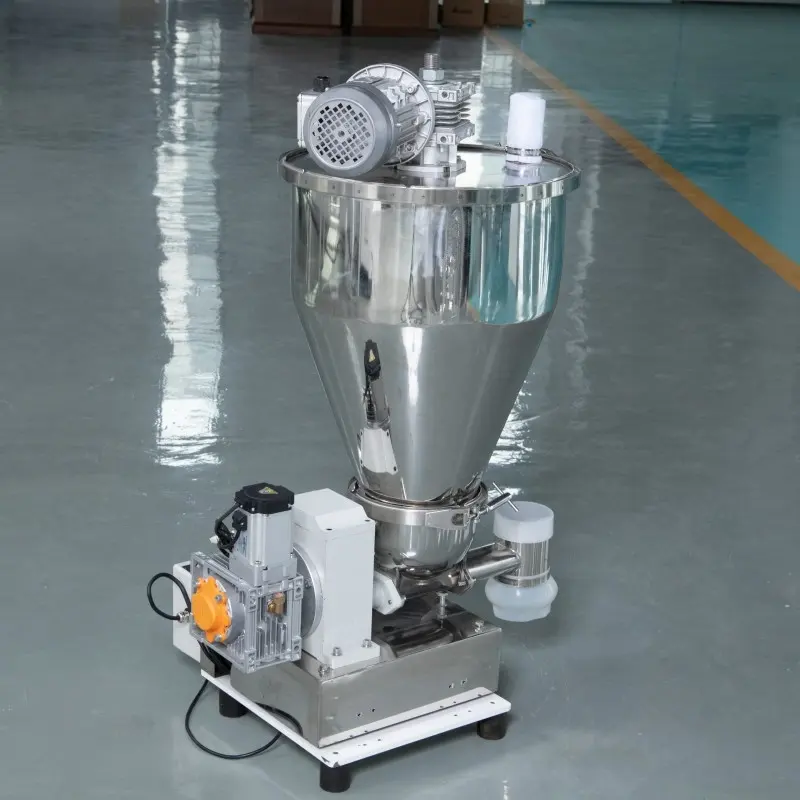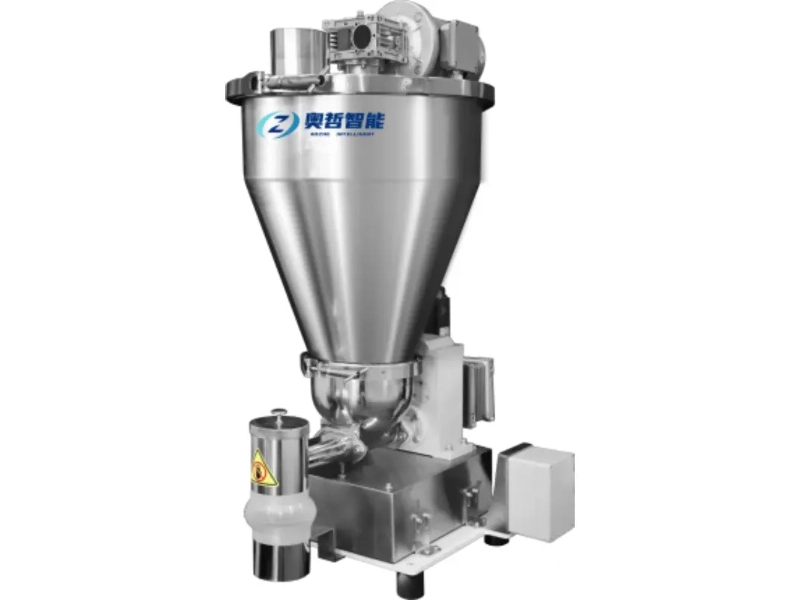Doseurs volumétriques et gravimétriques : une comparaison complète pour l'automatisation industrielle
Date de sortie : 17/07/2025
En automatisation industrielle, une alimentation précise des matériaux est essentielle pour garantir une qualité et une efficacité constantes. Les doseurs volumétriques et gravimétriques sont deux types de doseurs couramment utilisés, mais qui répondent à des objectifs différents. Comprendre leurs différences peut aider les entreprises à choisir le doseur le mieux adapté à leur application spécifique. Voici une comparaison complète :
1. Principe de fonctionnement
Doseurs volumétriques : Ces doseurs mesurent et distribuent le matériau selon un volume spécifique. Le débit est contrôlé par la vitesse du mécanisme d'alimentation (par exemple, des vis), et la quantité distribuée est déterminée par le volume, et non par le poids.
Doseurs gravimétriques : Ces doseurs mesurent et distribuent le matériau en fonction de son poids. Ils intègrent un mécanisme de pesée qui surveille en permanence le poids du matériau pour garantir une distribution précise. Le doseur ajuste le débit en fonction du poids souhaité.
2. Précision
Doseurs volumétriques : Tandis que doseurs volumétriques Ils sont rapides et simples, mais leur précision peut être affectée par les variations de densité et de fluidité du matériau. Ils sont particulièrement adaptés aux applications où de légères variations de poids ne sont pas critiques.
Doseurs gravimétriques : Doseurs gravimétriques Ils offrent une précision supérieure car ils mesurent le matériau en fonction du poids et compensent les variations de densité. Ils sont donc idéaux pour les applications exigeant une grande précision, comme dans l'industrie pharmaceutique ou le traitement chimique.
3. Applications
Doseurs volumétriques : couramment utilisés pour la manutention de matériaux en vrac dans des secteurs comme le plastique, l'agroalimentaire et l'agriculture. Ces doseurs sont particulièrement adaptés aux applications où le matériau est relativement uniforme et où un contrôle précis du poids n'est pas une exigence stricte.
Doseurs gravimétriques : Généralement utilisés dans les industries où la précision des quantités est cruciale. Ils sont courants dans l'industrie chimique, pharmaceutique et agroalimentaire, où la régularité et la précision sont essentielles.
4. Entretien
Doseurs volumétriques : ils nécessitent généralement moins d'entretien, car ils comportent moins de composants et ne disposent pas de mécanisme de pesée. Ils sont plus faciles à nettoyer et à entretenir.
Doseurs gravimétriques : Ces doseurs nécessitent davantage d'entretien, notamment pour les cellules de charge et les mécanismes de pesage. Un étalonnage correct est nécessaire pour garantir des mesures précises, ce qui peut entraîner des coûts d'entretien plus élevés.
5. Rapidité et flexibilité
Doseurs volumétriques : Connus pour leur fonctionnement à grande vitesse, les doseurs volumétriques sont souvent préférés dans les applications où la vitesse est critique et où de légères inexactitudes peuvent être tolérées.
Doseurs gravimétriques : Bien que plus lents que doseurs volumétriques industriels en raison de la nécessité d'un pesage continu, les doseurs gravimétriques offrent plus de flexibilité dans le contrôle du flux de matériaux avec précision.
Les doseurs volumétriques et gravimétriques présentent tous deux des avantages et conviennent à différents besoins industriels. Les doseurs volumétriques sont idéaux pour les applications à grande vitesse et à faible coût où la précision n'est pas essentielle, tandis que les doseurs gravimétriques sont plus adaptés au contrôle précis et aux applications exigeant une précision et une régularité élevées. Le choix entre les deux dépend des exigences spécifiques du procédé, notamment la précision, la rapidité, les coûts et les caractéristiques des matériaux.
À Jiangsu génialNous comprenons la diversité des besoins des industries et proposons des solutions de dosage volumétrique et gravimétrique adaptées à vos besoins spécifiques. Laissez-nous vous aider à optimiser votre processus de production grâce à la technologie de dosage adaptée. Contactez-nous dès aujourd'hui pour découvrir comment nous pouvons améliorer vos opérations !


